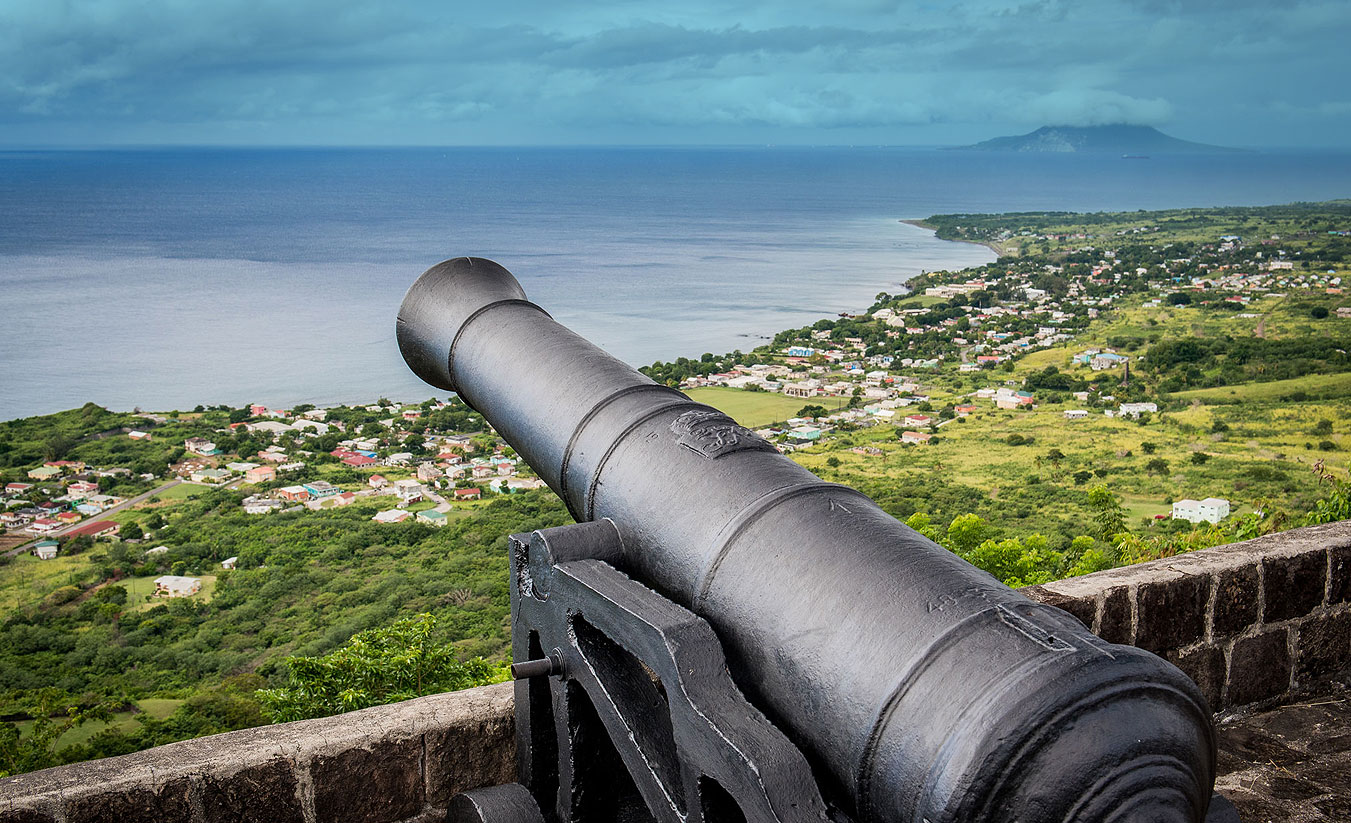
The Christmas Sports takes place in the days between Christmas and New Year. These are street performances. However some elements on the sport, particularly the Masquerade, is used as cultural performances throughout the year.
THE BULL
is based on a story that had its origins in St. Kitts itself. It is said that Arthur Davis, the owner of Belmont estate, and brother of Basil Davis, Manager of the Sugar factory bought a young bull for breeding purposes and put it in the care of some farmhands. The bull was a fierce one and one day almost gored one of its minders. The man stabbed it and thinking that he killed it called Mr. Davis who brought in a vet. The vet treated the bull and it survived.
The cast consists of Bull, Davis, Sweetie, Oak, Dr. Pick-me-Heel, Backanash, Dog, and Police Sergeant. The street performance is accompanied by tambourine, chopping reel, bar-horn, triangle, shack pan and bamboo fife. The performance however mimics some of the bible plays that became popular in the late 18 and 19th century.
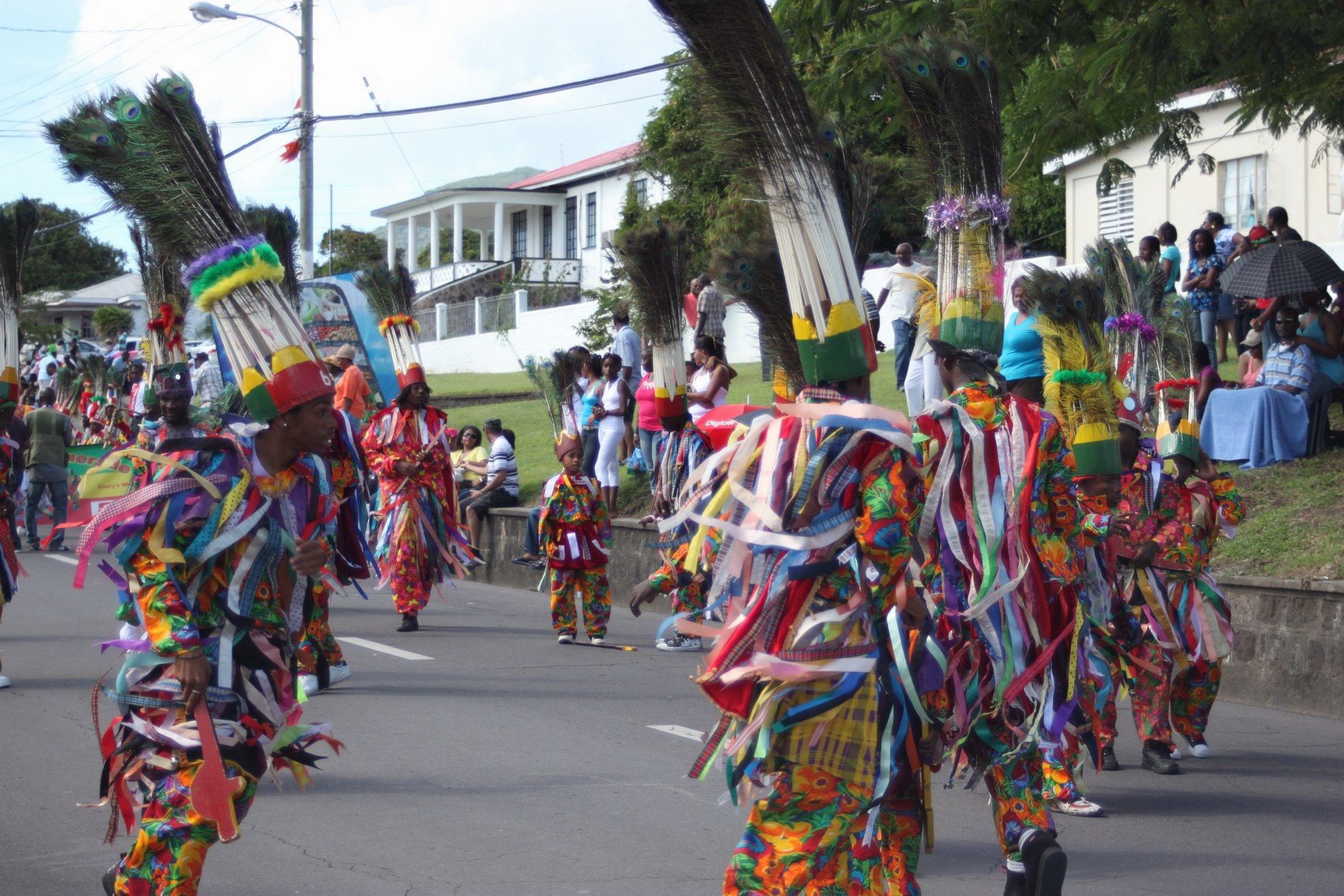
THE MASQUERADE
is the performance that is the most popular today. It is colourful, full of movement and very entertaining. It is definitely a mix of African and European genres. There are usually 10 to 15 members to this group ranging in age from six to sixty years, led by a Captain. The dress consists of multicoloured shirts, a skirt or apron over breeches that were once knee length. All is decorated with a variety of ribbons, mirrors and jingle-bells. The face is covered by a pink-faced wire mask and on their head, the performers wear a crown of peacock feathers. They also carry a hatchet. The accompanying music is produced by a bamboo fife, kettle drum and bass drum. The perfomers dance a relatively sedate quadrille and a fiery wild dance which is reminiscent of some of the war dances of West Africa.

CLOWNS
are not the circus clowns. There is nothing funny about the St. Kitts clowns, actually most people used to talk about being scared by them. The Clowns are really a part of a much larger troupe that has now disappeared. It included the Japanese Girls and the Millionaires. Why the names were chosen is anybody’s guess now but it probably had something to do with their costumes. The millionaires wore an elegant white suit, They danced the cake walk with the Japanese girls. The girls carried the dainty parasols wore short skirts, and stockings. They put down their umbrella at the start of a dance probably to ensure they did not knock down anything as they danced inside the plantation house not the yard. When they were finished the clowns went into their routine which ended with the frenzied cracking of whips.

MOKO JUMBIE
has always been a popular troupe. It consists of stilt walkers who perform above the head of the crowd. Stilt walkers show up in both European and African cultures. Once it was an all male group but that has changed now. Its costume consisted of a long gown and a tapering conical head dress. Again there are numerous variations on this now. Stilt walking can be found worldwide. It had some very practical applications like allowing shepherds watching flocks of sheep to extend their field of vision, or to get over flooded ground.
The meaning of the name is uncertain. There is the story told in Mills and Jones Hendrickson of the sukinaw a jombie vampire who took refuge in the macaw tree. But we must also keep in mind that some of the people who were brought to St. Kitts were of the Moco ethic group. According to Professor Maureen Webster Lewis these were from the area of Old Calabar at the estuary of the Niger River in present-day Nigeria. The name is spelt Moco, Mocho, Moko. The people exiting from this area are likely to have been Kalabari, Ibibio, Igbo, Ijo. It is possible that the name derived from this particular group of people,
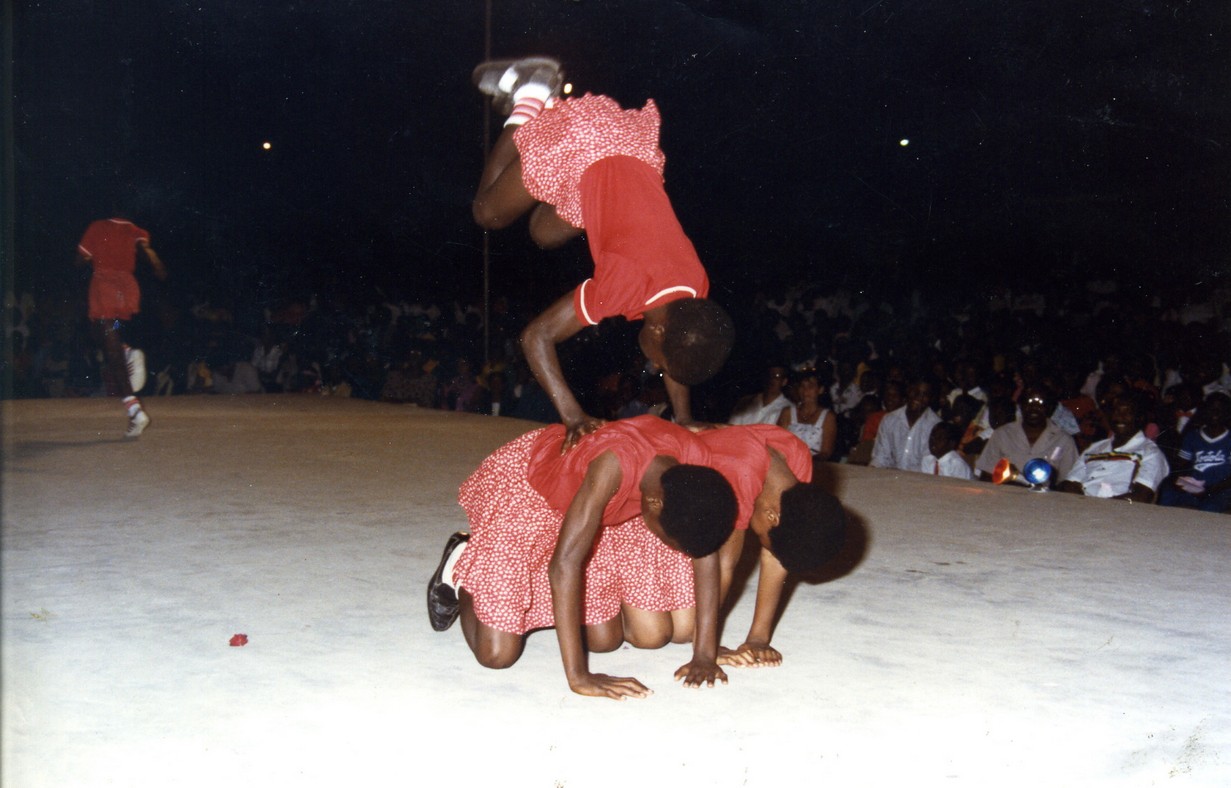
THE ACTORS
or acrobats are closely associated with St. Peters. It is said that they had their origins in the entertainments that Governor De Poincy encouraged at his castle at Fountain estate. One of the acts involves jumping over pitch forks. At one time this was carried by a man dressed in red and wearing horns. He was supposed to be the devil. This might be an association with Carnival in Catholic countries where it is claimed that it is the feast of the devil. The men in this troupe are said to be protected by lodestone, a magnetized mineral that was considered magical and used in protective amulets.
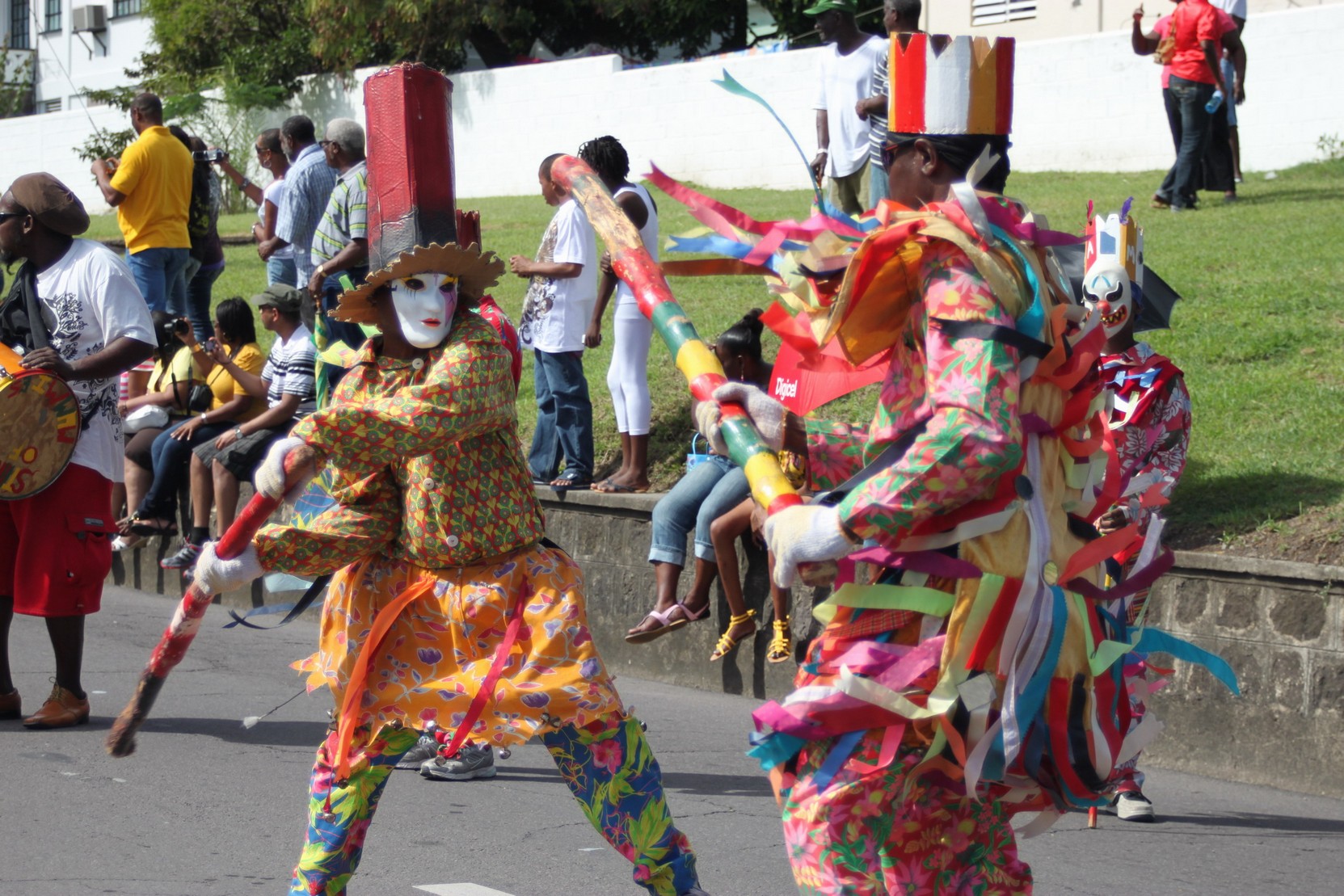
THE MUMMIES
had a cast of 13 characters which included the Captain or Fool, Saints David, Andrew, George and Patrick, Slasher, the Turkish knight, Hector, the Black Prince of Palestine and the Egyptian King, Giant or Dragon, Doctor and Woman. The name comes from the mummers once common around the English country side at Christmas and who made their way into the culture of the Caribbean and Newfoundland in Canada. In St. Kitts, this play consist of confrontations that end up in stick fights. The costumes have changed and now resemble those of the masquerade. The troupe is accompanied by fife and drum.
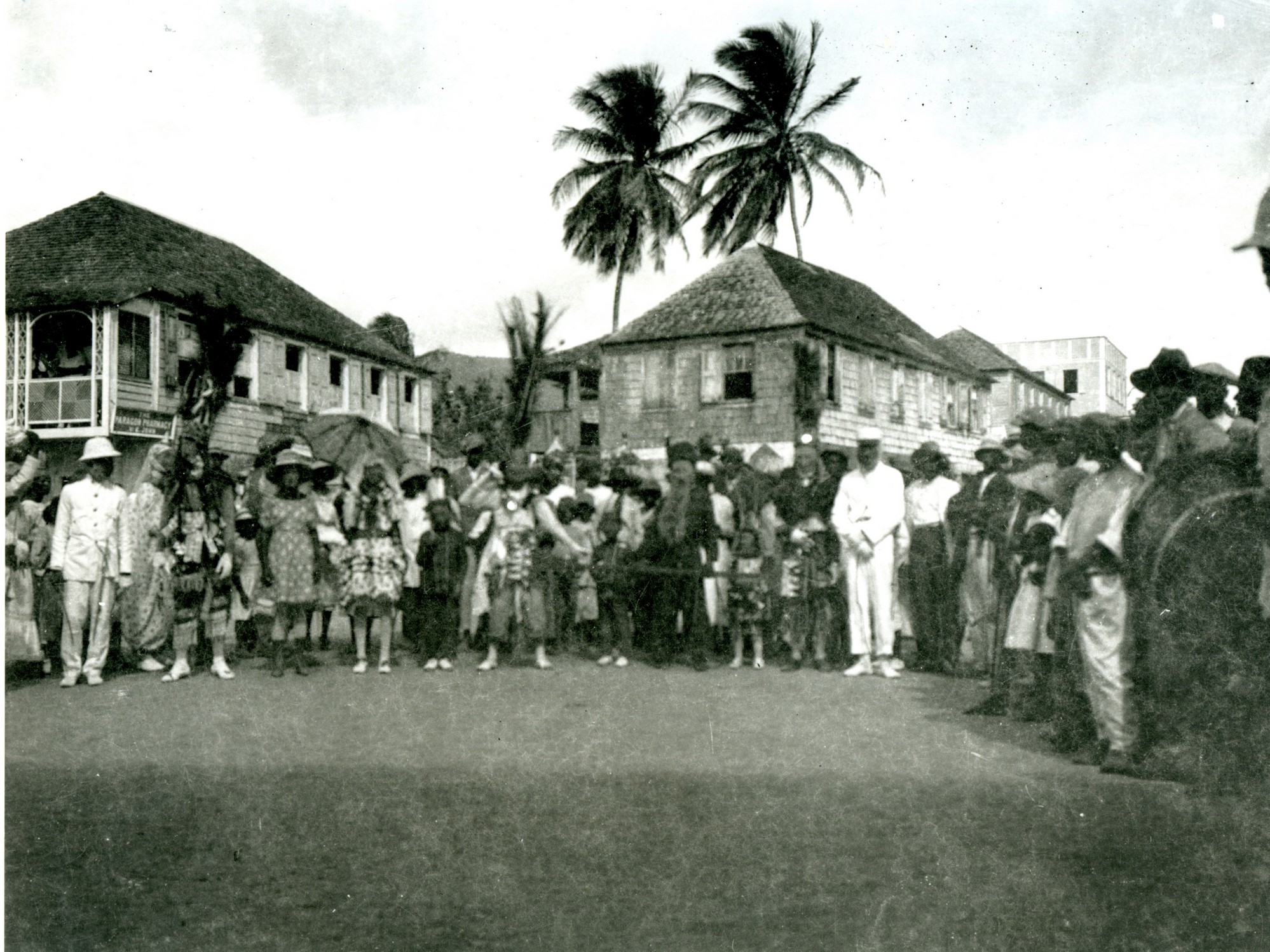
Sport that is no longer performed.
COWBOYS AND INDIANS
Like the Cakewalk these were inspired by American culture and based on the western movies that were making their way into the cinema, The Apollo was opened in the 1920s and had seating at different prices so that it quickly became a popular entertainment and a source of inspirations
NEAGA BUSINESS
found inspiration in the social faux pas of the upper classes. You had to be careful or you would be played at Christmas. The performers made fun of everybody and sometimes in very offensive ways to the extent that it became necessary for their scripts to be submitted for censorship and they had to have police permission to preform. This troupe no longer comes out at Christmas. To a certain extent their role was taken over by some very early calypsonians.
DAVID AND GOLIATH
is no longer performed. According to Mills and Jones-Hendrickson it was last seen in Sandy Point in 1965. This play was based on one written by Hanna Moore an 18th century English writer. In the version of the play in St. Kitts, the part of David was played by a boy who was usually under twelve years of age. David has most of the dialogue in the play and therefore it took quite a bit of dedication on the part of the boy to learn it. This may be one of the reasons why the play is no longer performed.

